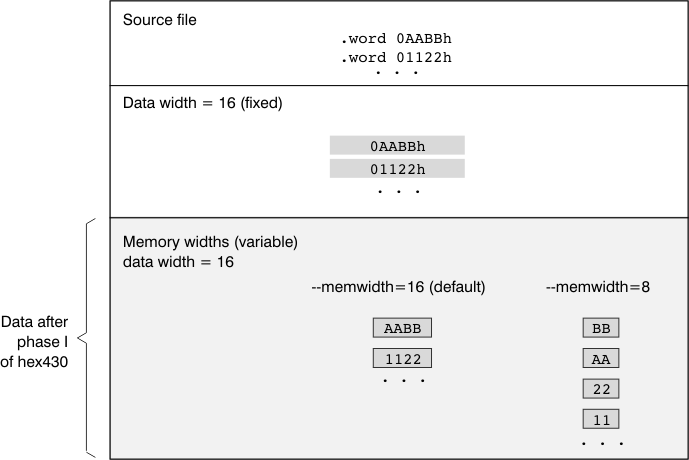SLAU131V October 2004 – February 2020
12.3.2 Specifying the Memory Width
Memory width is the physical width (in bits) of the memory system. Usually, the memory system is physically the same width as the target processor width: a 16-bit processor has a 16-bit memory architecture. However, some applications require target words to be broken into multiple, consecutive, and narrower memory words.
By default, the hex conversion utility sets memory width to the target width (in this case, 16 bits).
You can change the memory width (except for TI-TXT and TI-Tagged formats) by:
- Using the --memwidth option. This changes the memory width value for the entire file.
- Setting the memwidth parameter of the ROMS directive. This changes the memory width value for the address range specified in the ROMS directive and overrides the --memwidth option for that range. See Section 12.4.
For both methods, use a value that is a power of 2 greater than or equal to 8.
You should change the memory width default value of 16 only when you need to break single target words into consecutive, narrower memory words.
NOTE
TI-TXT Format is 8 Bits WideYou cannot change the memory width of the TI-TXT format. The TI-TXT hex format supports an 8-bit memory width only. See Section 12.13.6 for more about using the ROMS directive with the TI-TXT hex format.
Figure 12-3 demonstrates how the memory width is related to object file data.
